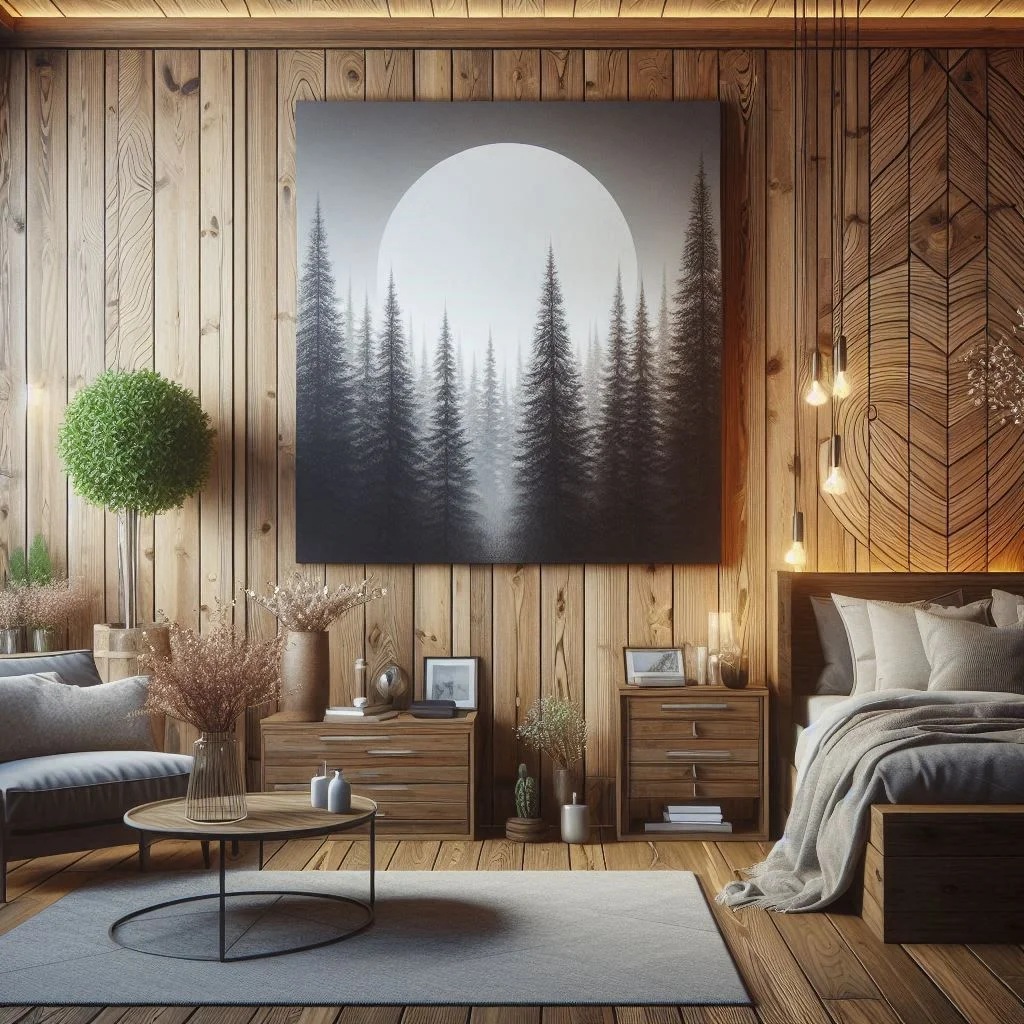Title: Horizontal or Vertical Wood Plank Walls: A Design Dilemma
When it comes to adding warmth and character to interior spaces, wood plank walls are a popular choice. Not only do they provide a natural and rustic aesthetic, but they also offer versatility in terms of installation styles. One of the key decisions to make when considering wood plank walls is whether to go for a horizontal or vertical orientation. In this blog post, we’ll explore the characteristics, advantages, and potential considerations of both horizontal and vertical wood plank walls to help you make an informed decision for your space.
Horizontal Wood Plank Walls:
Horizontal wood plank walls are installed with the planks running parallel to the floor. This orientation creates a sense of width and can visually expand the space. Here are some key points to consider:
Advantages:
Illusion of space:
Horizontal lines tend to make a room appear wider. This can be especially beneficial in smaller rooms or spaces with low ceilings, as the horizontal orientation can create a sense of openness.
Modern and contemporary appeal:
Horizontal plank walls often evoke a modern and contemporary aesthetic, providing a clean and sleek look that complements various interior design styles.
Natural flow:
If you have other horizontal elements in the room, such as furniture or flooring, a horizontal wood plank wall can create a sense of cohesion and continuity.
Considerations:
Height perception:
While horizontal planks can make a space appear wider, they may also make it seem shorter. If you have a room with already low ceilings, consider the potential impact of horizontal plank walls on the perceived height.
Room size:
Horizontal wood plank walls may overpower a smaller room if not balanced properly with other design elements. It’s important to assess the proportions and scale of the space before opting for horizontal planks.
Vertical Wood Plank Walls:
Vertical wood plank walls are installed with the planks running perpendicular to the floor. This orientation emphasizes height and can create a visually taller space. Let’s explore the advantages and considerations of vertical wood plank walls:
Advantages:
Height enhancement:
Vertical lines draw the eyes upward, creating an illusion of height. This makes vertical wood plank walls ideal for spaces with low ceilings or rooms that you want to appear more spacious vertically.
Traditional and classic look:
Vertical planks have a timeless appeal and are often associated with traditional and classic design styles. They can add a sense of elegance and sophistication to a room.
Visual interest:
The vertical orientation of the planks can add a sense of visual interest and dynamism to the space, breaking up the monotony of large, empty walls.
Considerations:
Width perception:
While vertical planks can make a room appear taller, they may also make it seem narrower. If you have a narrow space, it’s essential to consider the potential impact of vertical plank walls on the perceived width.
Design balance:
In rooms with high ceilings, vertical plank walls can create a sense of imbalance if not properly complemented with other design elements. Consider the overall proportions of the space and ensure the vertical orientation does not overpower the room.
Horizontal vs. Vertical:
Ultimately, the decision between horizontal and vertical wood plank walls boils down to your personal preferences, the size of the room, and the desired design aesthetic. Both orientations have their unique advantages and considerations. To help you visualize the differences, here’s a quick comparison table:
| Aspect | Horizontal Wood Plank Walls | Vertical Wood Plank Walls |
| Perceived Width | Wider | Narrower |
| Perceived Height | Shorter | Taller |
| Design Style | Modern, contemporary | Traditional, classic |
| Room Proportions | Overpowers small spaces | Overpowers narrow spaces |
| Ideal for Low Ceilings | No | Yes |
| Ideal for High Ceilings | Yes | Yes (with balance) |
Conclusion:
Choosing between horizontal and vertical wood plank walls is an important design decision that can significantly impact the overall look and feel of a space. Consider the size and proportions of the room, the desired design style, and the potential visual effects of each orientation. Whether you opt for horizontal or vertical wood plank walls, they are sure to add charm and character to your interior, creating a warm and inviting atmosphere that’s uniquely yours.

